Introduction.
Liberty Ship William Dawes, hull number 180, was laid down on the 26th. of October 1941, launched on the 9th. of February 1942, to be completed on the 7th. of May of that year, had but a short life in service. She was one of 2,751 ships of this class built in the United States over WW2, and also one of 200 torpedoed, falling victim to the Japanese submarine I-11 on the 22nd. of July 1942, off the coast of New South Wales, Australia.
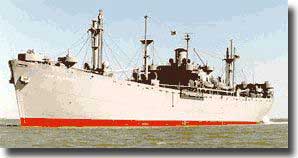
Photo of a Liberty ship. John Brown.
William Dawes was one of 2,751 ships in this class, built for service in WW2.
Only two Liberty Ships are still around, one Jeremiah O'Brien, in San Fransisco, the second, John W. Brown, in Baltimore.
History of Japanese Submarine I-11.
I-11 a Type A1 submarine, completed at Kobe on the 16th. of May 1942, within a few days of William Dawes' completion. She carried a float plane for reconnaissance purposes. By July of 1942, I-11 was on patrol off the south coast of New South Wales, and quickly achieved success.

A line drawing of a Japanese Type A1 Submarine.
I-11 was one of this class.
On the 20th. she sank the 4,835 ton, Greek ship George S Livanos, off Jervis Bay, the next day she accounted for the United States 3,290 ton, Coast Farmer, then on the 22nd. it was the turn of the Liberty ship William Dawes to be torpedoed. This 7,176 ton vessel had a full load of jeeps, trucks, ambulances and explosives, and 5 of her personnel were killed in this attack. The Captain of I-11 must have been well pleased with his three days days work, three ships all sunk for a total of 15,301 tons.
Continuing to hunt off the NSW coast, on the 24th. of July, I-11 found the steamer Coolana, wanting to conserve her torpedoes, gunfire was used against this vessel, but it managed to make good its escape.
I-11 now faces a drought.
This Japanese submarine having achieved quick success off Australia, now ran into a period faced by all submariners or Armed Merchant Raiders during WW2, a long stretch, where the days dragged into months and not a target to be found.
It was nearly a year before I-11 had the Royal Australian Navy light cruiser HMAS Hobart lined up in her periscope, it was now the 20th. of July in 1943. She damaged this cruiser with a torpedo that struck home, but did not sink the ship, which managed to limp back to base to be repaired and again join in the struggle against Japan in the Pacific. Hobart had 15 sailors die, and another 7 wounded from this attack.
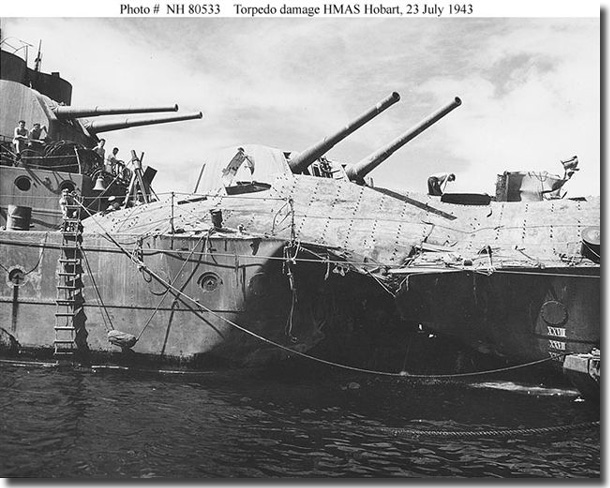
Damage to HMAS Hobart after being hit by a torpedo fired by Japanese submarine I-11 in 1943
In the next month, 1-11 damaged the Liberty ship Matthew Lyon, off Noumea, but the ship survived, Come September in 1943, I-11's Captain skilfully penetrated the anti-submarine screen around the US carrier Hornet, he fired off a spread of torpedoes, but they all missed.
Now this boat became the flagship for Rear Admiral Katsumi's Sub Force Kon. In 1944, on the 20th. of March, I-11 went missing, it was thought that a mine had claimed her.
On to November 2004.
Now, after 62 years since William Dawes was sent to the bottom, divers from Sydney Project have broken the New South Wales diving record to find this old Liberty Ship, sitting on the ocean floor at 135 metres off Merimbula.

Photo steering wheel from a vehicle loaded in William Dawes.
(This and all the following photos from the dive on both William Dawes and Bega are reproduced with the kind permission of Diver Samir Alhafith who took them.)
A second ship, the coastal steamer TSS Bega, a 96 year old wreck was also found. She had capsized and sunk off the coast, between the towns of Tathra and Bermagui on the 5th. of April, 1908, all her crew and passengers had abandoned ship safely before she went down.

Photo of a tea cup from the Bega,
still intact from the Bega sunk in 1908.
Area in which William Dawes was discovered.
The area where William Dawes was discovered has, over many years been a problem for the local fishermen, it snagged their nets. Ken Appleby, a local boat operator out of Bermagui, and Sydney Project Diver, Stewart Bell had long thought a wreck was probably the root cause of the problem. They had plotted the suspected wreck's location from information provided by the local fishermen. Retired engineer Fred Billington, and Charter Boat operator David Prior found the wreck of William Dawes in October 2004, after many years of searching for her. Using a magnetometer they found anomalies on the sea bed, having developed an under water video camera, hooked onto a screen within their boat, so that they might spot wrecks.
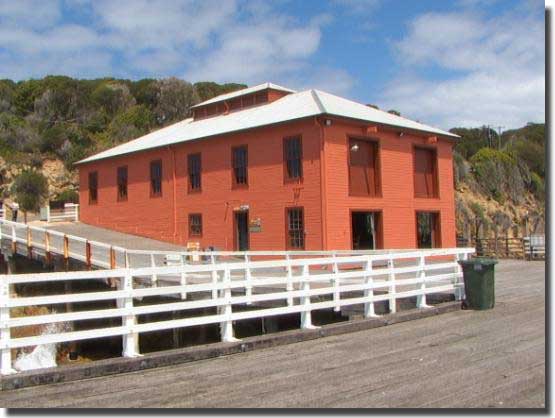
The Tathra wharf from where Bega had sailed the night before she sank.
Federal Minister for the Environment and Heritage makes announcement about finding wrecks.
Senator Ian Cameron, Federal Minister for the Environment and Heritage said:
"These two pristine wrecks just discovered off the NSW coast offer rare opportunities to investigate Australia's Maritime Heritage. Because the wrecks have remained untouched, they are virtual time capsules, rich in stories, and historic information, important to our knowledge of the past. With proper care we can study and learn from these under water Museums. For this reason, I am protecting them under the " Historic Ship wrecks Act of 1976" by 4. declaring "A protected zone around the Bega" which will limit access to the site to those holding a permit and by declaring the William Dawes to be an " Historic Shipwreck" whch will enable divers to vist the wreck, but not to remove or disturb relics without a permit.
"It is important that we respect our under water history" he said.
"Our wrecks provide a wonderful opportunity to explore and better understand our past, the valuable information that they hold, needs to be protected for the benefit of all Australians, both now and in the future."
Conclusion.
The sea, which for many years has held close these secrets, has now been forced to yield and share them.

Photo of radiator from a vehicle in the sunken William Dawes.
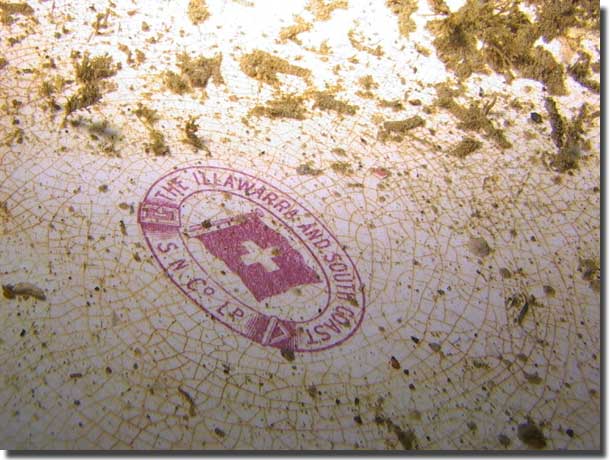
An embossed plate of the Shipping Company that owned the Bega.
Found in the wreck in November 2004, having sat on the bottom of the ocean since 1908
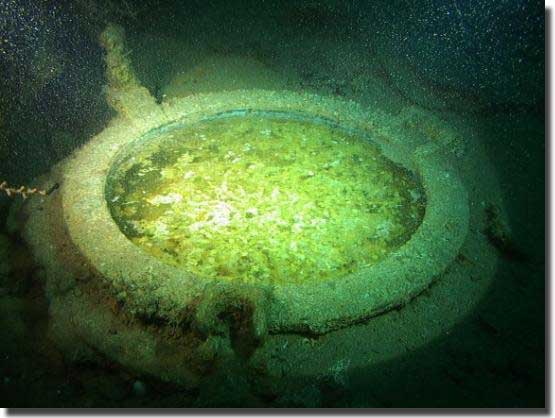
Porthole from Bega









